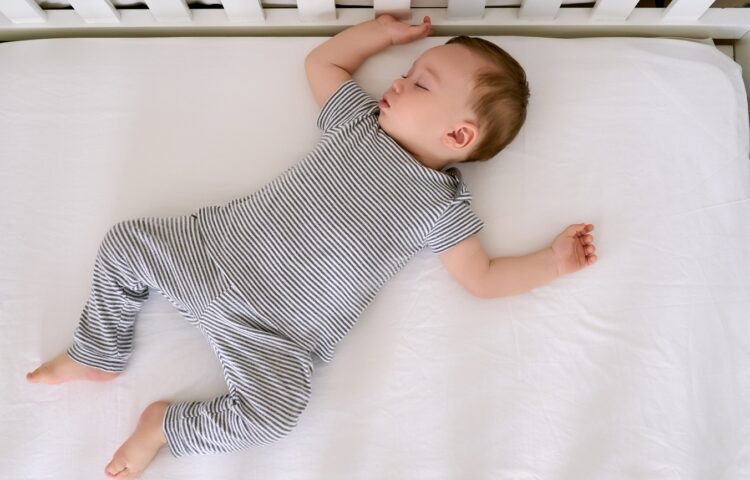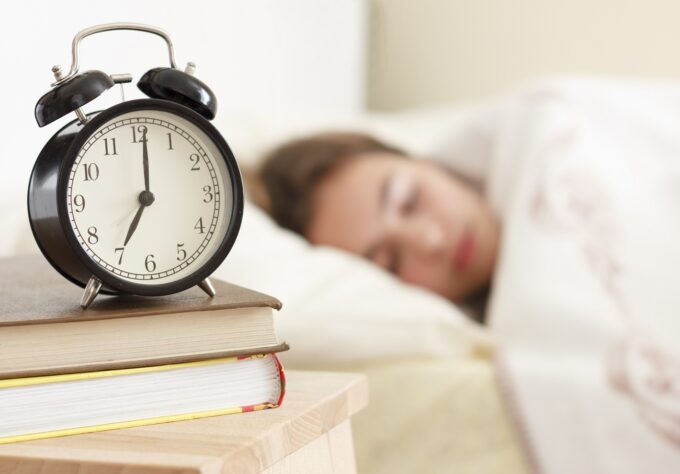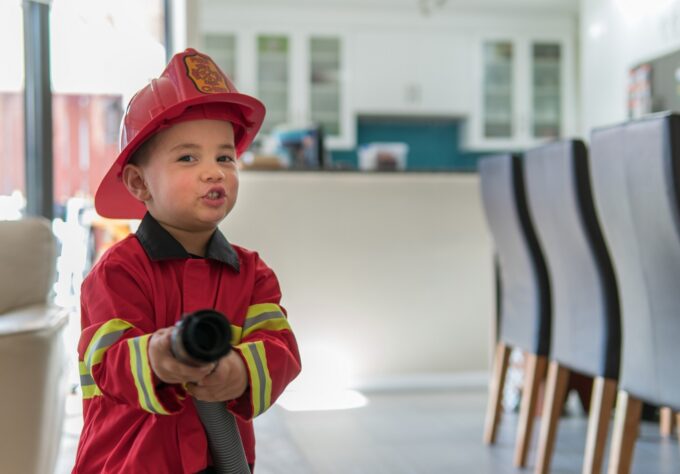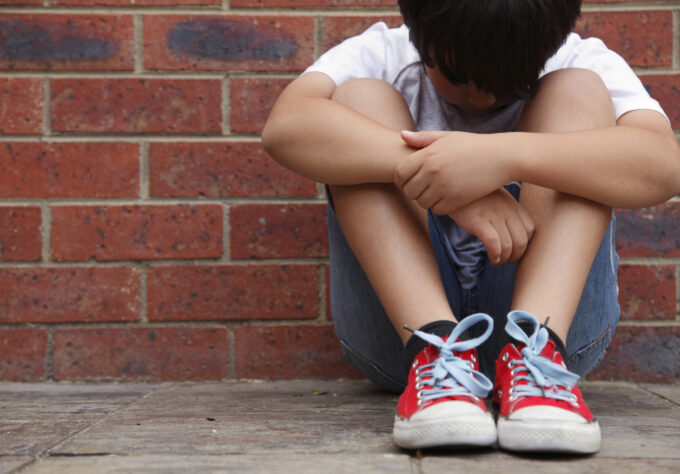Much of a baby’s early life is spent sleeping. In fact, many newborns snooze 16 to 17 hours a day! It’s important that sleeping hours be just as safe as those spent awake. Sudden infant death syndrome (SIDS) is a leading cause of death in infants 1 month to 1-year-old. Most of these SIDS deaths occur in the first six months of life.
Here are the top tips to keep in mind to ensure that your baby’s sleep environment is as safe as possible.
1. Keep your baby in your bedroom – but not your bed.
The American Academy of Pediatrics (AAP) recommends room-sharing (as in bedroom-sharing). This is when an infant sleeps in the same bedroom as their parents (but not the same bed) for at least their first six months.
The reason sharing a bed (also called “bed-sharing”) is not recommended is that parents can accidentally roll onto or push their baby off the bed. Bed-sharing significantly increases your baby’s chance of SIDS due to overheating or by suffocation. A much safer alternative is room-sharing. This is when your baby sleeps in a crib, bassinet, or portable crib/playpen your bedroom, but not in your bed.
Room-sharing allows your little one to be near enough to hear, smell, and sense you – and for you to be more aware and ready to help if your baby is in distress – but without the dangers of bed-sharing.
Room-sharing also makes it easier for moms to breastfeed, which (on its own) has been shown to decrease SIDS risk by 70%. Just remember to always return your baby to their own sleep space (outside of your bed) after breastfeeding.
Read the details of the updated AAP policy on infant sleep safety.
2. Swaddle your baby safely.
Swaddling (wrapping a baby snugly in a cloth or light blanket) can help calm babies and soothe them to sleep. And some babies respond well to swaddling. However, research has suggested that incorrectly swaddling may increase infants’ risk of SIDS by about one-third, sparking a national conversation about infant sleep safety.
The thing is, when performed correctly (and at the right age and stage) swaddling can be very effective – and safe. Babies just should not be swaddled after 2 months, as this is when some babies can start to roll over even while swaddled.
Sleep sacks are recommended for infant safe sleeping and come with and without swaddling options.
Check out more important safety and how-to information from the AAP about swaddling.
And now, for the standard infant sleep safety recommendations all parents of infants should follow…
3. Place your baby on the back to sleep.
Never place your baby to sleep on the stomach or side. Babies put to sleep on their sides are likely to roll onto their stomachs. And babies who sleep on their tummies are at an increased risk of SIDS.
Why? Well, some think this puts pressure on the baby’s jaw, which narrows the airways. Others think that the baby re-breathes exhaled carbon dioxide in this sleeping position. We don’t know a lot about this mysterious cause of death. But we do know that infants who are placed to sleep on their stomachs or sides have a much higher risk of SIDS.
Of course, babies often begin rolling over between 4 and 6 months old (and some may start as early as 2 months). If your baby rolls over onto the belly during sleep, you don’t need to roll them back over. But when first placing your down for a nap or at night, do continue to place your infant to sleep on the back until age 1. Your baby may still turn over during sleep – and that’s okay.
4. Buy a crib (or other sleep furniture) that meets safety standards.
Full-sized mattresses, couches, and armchairs are no place for babies to sleep – ever. Proper sleep furniture should meet Consumer Product Safety Commission (CPSC) standards. So make sure your infant is always sleeping in a safe:
Crib
Choose a sturdy one with fixed side rails (not adjustable) and slats that are 2 3/8 inches apart so your baby can’t fall out or get stuck.
Portable crib/playpen/play yard
Set up properly according to the manufacturer’s instructions and only use the mattress pad provided. Don’t add any extra padding.
Bassinet
Check that the bassinet has been approved by the Juvenile Products Manufacturers Association (JPMA) and is marked with their seal.
And one more important item…
Inclined products and equipment such as strollers, car seats, swings, bouncers, infant carriers, slings, and loungers are not safe places for infants and babies to sleep. Babies are safest sleeping flat on their backs. This keeps their head, neck and jaw from flexing and collapsing downward.
5. Buy new when you can, and double-check old.
Baby merchandise isn’t exactly cheap. So if you need to borrow or buy second-hand baby furniture and products, make sure to check the CPSC for safety recalls. But try to avoid hand-me-down or used cribs and other infant furniture/equipment that are more than 10 years old.
6. Find a firm, fitting mattress.
It should be firm because infants don’t have the strength to push away from a surface that’s soft and can block their breathing. Also, make sure to use:
- a mattress that fits snugly in your baby’s crib, bassinet, or portable crib/play yard/playpen. Don’t use a mattress that’s too big or too small – it should fit just right. A mattress that doesn’t fit the frame of the crib or sleeping furniture can allow for the infant to become trapped between the two.
- sheets that snugly fit the exact size of the mattress. Never use sheets that are too big (and too loose) or too small (and too tight).
7. Remove everything from your baby’s crib but the mattress and a snugly fitted sheet.
Your baby’s sleep environment should be completely bare. That means no pillows, blankets, stuffed animals, and/or toys – all of which could potentially suffocate your baby or block breathing. Also steer clear of products like positioners and wedges that are marketed to prevent SIDS – these have not been proven to be safe or effective.
And, years ago, baby bumpers were considered a must-have for new moms’ registries. But now those have now been deemed dangerous, too. So what you used for an older child may no longer be considered safe for a new baby.
8. Keep potential hazards out of your baby’s reach.
Place the crib, bassinet, etc. away from the window and any wall hangings (e.g., curtains, blinds, picture frames) that could be pulled down and could strangle or fall on your baby.
Learn More About SIDS Prevention
If you have any questions or concerns about your baby’s sleeping safety, talk to your child’s primary care doctor and/or check out these handy resources:
- Bed-Sharing (Nemours’ KidsHealth.org)
- Choosing Safe Baby Products: Cribs (Nemours’ KidsHealth.org)
- How to Keep Your Sleeping Baby Safe: AAP Policy Explained (AAP’s Healthychildren.org)
- Safe to Sleep Campaign (National Institute of Child Health and Human Development)
- Safe to Sleep: Crib Information Center (Consumer Product Safety Commission)
- SIDS (Nemours’ KidsHealth.org)
- Sleep Safety and Suffocation (Safe Kids)



